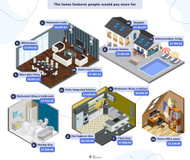Posted on Date 20th Dec 2023
How tiles can increase the value of your home
Tiles And Value
Our homes are our sanctuaries, offering us respite from the outside world. As such, aesthetics and style are key factors in making a house a home, enabling us to leave our unique print on a house, making it cosier in the process. For a lot of people, spending time at home during the pandemic made them want to change their space, leading to DIY home offices or TikTok stencil tiling hacks to transform our bathrooms or kitchens on a budget.
This space is important not only for well-being and relaxation but also as a means of self-expression. The materials and styles we adopt also indicate aspects like wealth and class, outlook on life and style preferences.
With the strong current housing market, Tile Warehouse conducted a survey to assess the attitude of potential buyers toward the connection between aesthetics and value, and whether they would offer more than the asking price for certain features that suit their tastes. The past couple of years have seen major price hikes in housing; sellers want to make sure they're maximising their profits, while buyers want to be sure they're getting the best value.
Buyers attitudes to aesthetics and value
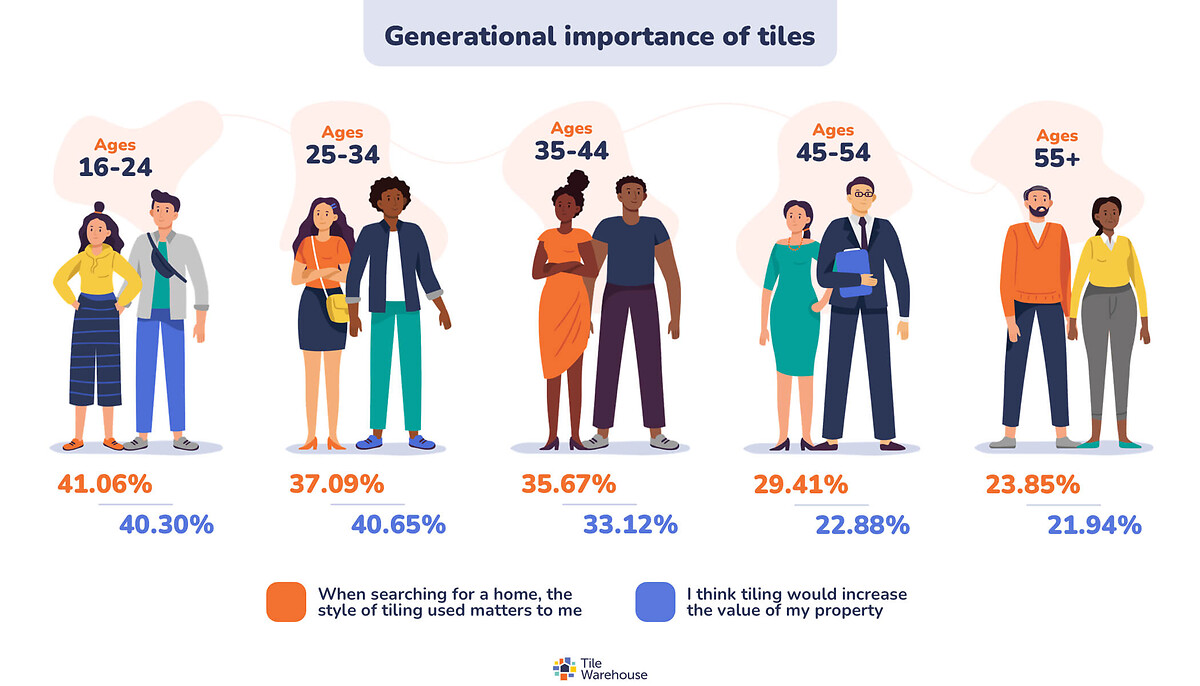
When it comes to aesthetics and home value, almost half of those who have a mortgage were the most likely to decorate their house in a style they love even if it negatively affects the value of their home (48.68%).
However, they are also the most likely to modify the style of their home prior to selling to increase its value (51.76%). This suggests that homeowners care about aesthetics and home value equally, as they want their house to look a certain way while they live there but are also happy to make changes when it comes time to sell to increase value.
Some 44.84% of those living in private rental accommodation decorate however they want, potentially making temporary adaptations to their home to suit their tastes and then modifying this again prior to moving out in order to not breach their rental contract. Interestingly, 40.22% of those who own a property outright would decorate in a style they love, regardless of the impact on the value. They would also be less likely to modify the house prior to selling to increase value (38.49%).
Almost half of the respondents (46.56%) in our survey stated that a homes aesthetic is one of the most important factors when it comes to purchasing, with many prepared to offer more than 7,000 over the asking price for certain features. From simple changes in terms of tiles to changes to the layout of your house, there are certain features that could be making you a profit.
The home features buyers find most attractive
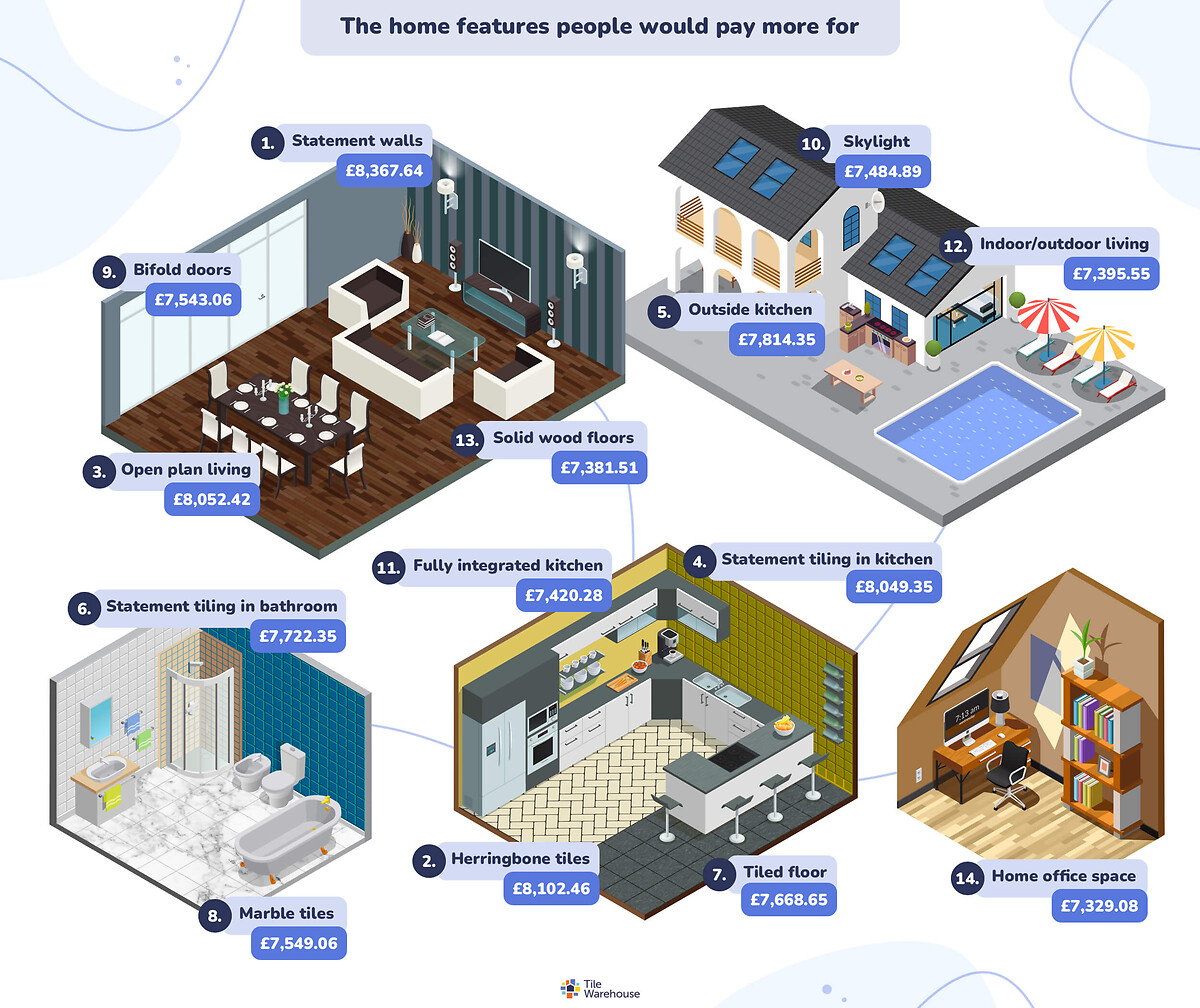
Some of these features constitute major changes to your living space if you don't already have them, paralleled with smaller adjustments like tiling and flooring. What's interesting is just how much respondents seemed to value certain features, some of which are relatively easy to implement and others trickier to get right, for example statement walls could differ massively depending on the preferences of the buyer.
Commanding an additional 7,500 over the asking price on average were several tiling variations, including herringbone tiles (8,102.46), statement tiling in the kitchen (8,049.35), statement tiling in the bathroom (7,722.35), tiled floor (7,668.65) and marble effect tiles (7,549.06). These features were ranked as ones that respondents would pay more for over traditional favourites such as bifold doors, a skylight, a fully integrated kitchen, indoor/outdoor living, solid wood floors and even a home office.
The importance of tiles to different generations

Our survey results showed that the style of tiling used when searching for a home mattered less as people got older, with 41.06% of 16-24-year-olds claiming that this was important to them compared with 23.85% of respondents over the age of 55 who said that the tiling used in a house mattered to them.
When it came to the value surrounding tiling, it was the younger generations that were more likely to believe that the style of tiling would increase the value of their property. This again, decreased through the generations, with just 21.94% of over 55s believing that tiling increases property value. This could offer us a glimpse into interior design trends and how this differs across generations in the UK.
What tiles different generations prefer
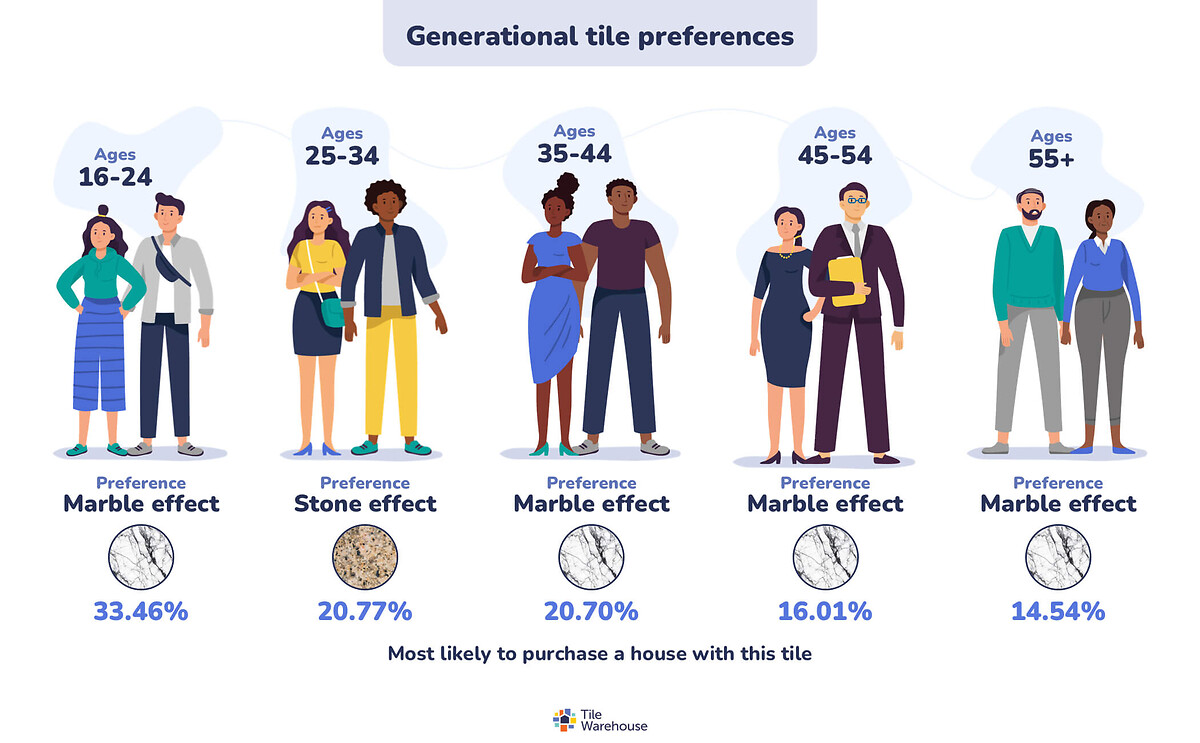
Every generation bar one would be more likely to purchase a house with marble effect tiling, whilst those in the age range of 25-34 are in favour of stone effect tiling. Whereas other age ranges will be more interested in a mosaic pattern or prefer porcelain material tiles.
Respondents to our survey demonstrated a correlation between aesthetics and value, and additionally between the use of tiling and perceived value. As such, we decided to map the areas where you are more likely to sell your house based on the tiling used.
Where marble effect tiles are most popular with house buyers
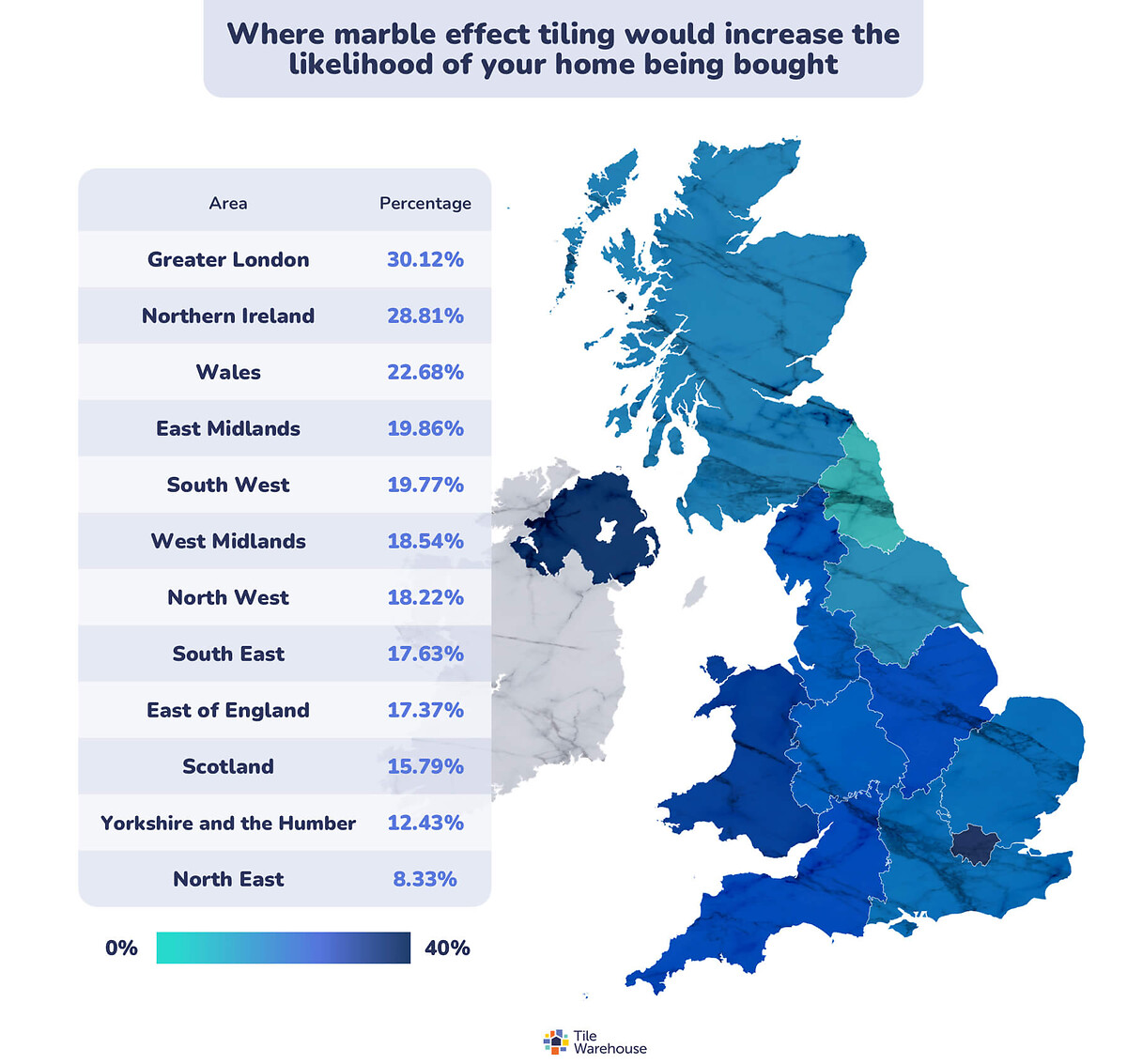
It turned out that those areas favouring marble effect tiles were Greater London (30.12%), Northern Ireland (28.81%), and Wales (22.68%), with respondents in these areas saying they would be more likely to purchase a house that had this feature.
Marble tiles have historically been associated with wealth and opulence, with homeowners using this to emulate an image of luxury, and many opting for marble-effect to get the same aesthetic at a lower price point.
Where stone effect tiles are most popular with house buyers
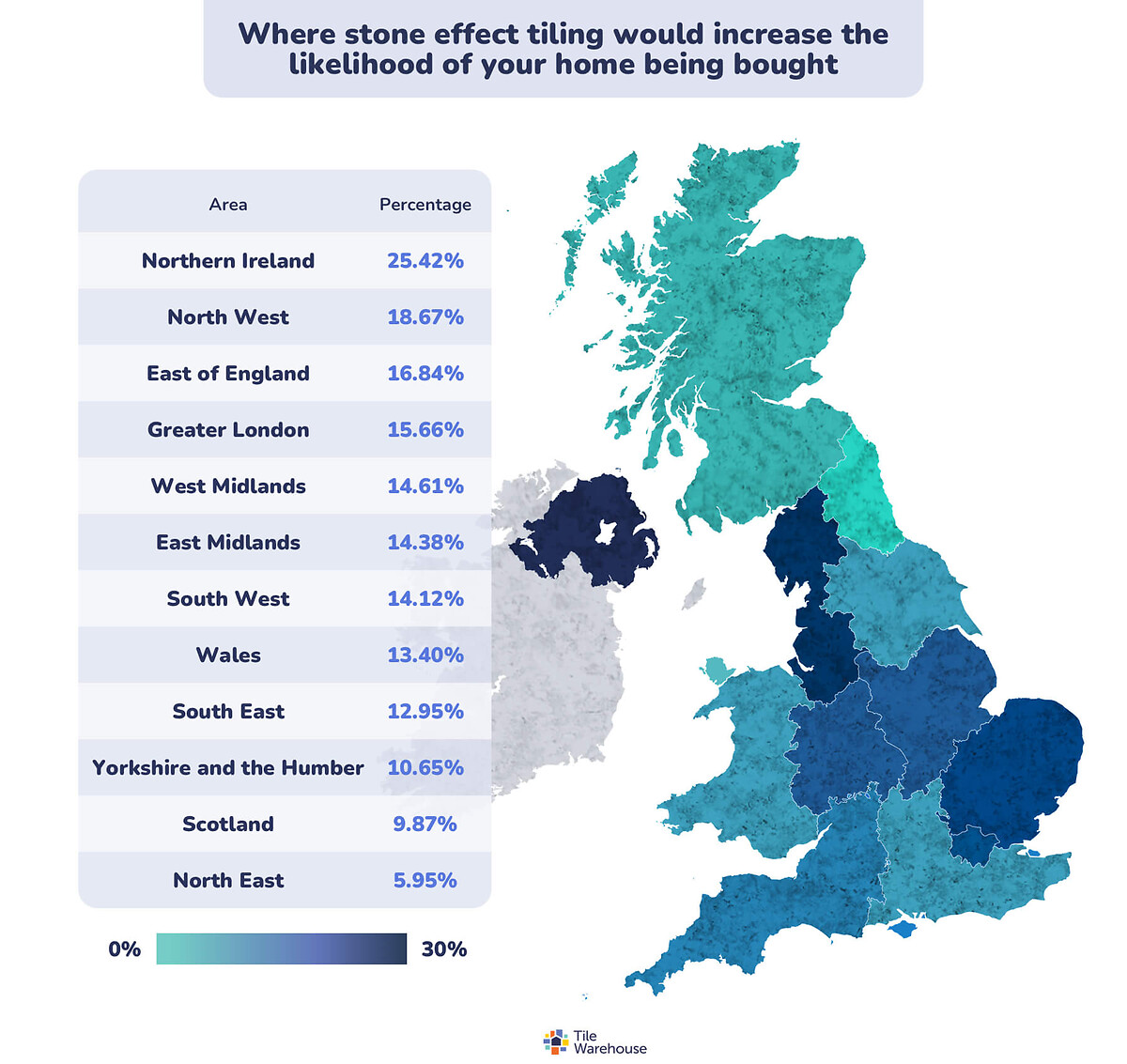
In comparison, the areas in the UK that favoured stone effect tiling were Northern Ireland (25.42%), North West (18.67%), and the East of England (16.84%).
The areas least likely to be motivated to buy based on tiling were the North East, with just 8.33% favouring marble effect, and 5.95% favouring stone effect. They were followed by Yorkshire and the Humber, with 12.43% favouring the marble effect and 10.65% favouring stone effect.
Whether its entire layout changes or small tweaks to your kitchen or bathroom, there are numerous ways to add value, not only financially but also to improve your homes aesthetic. Our homes are a representation of who we are as people, or how we wish to appear. Trends will come and go, while the association of certain styles like marble effect with opulence will continue to stick. However, whether they're desirable in the eyes of a potential buyer will depend on their tastes and desired aesthetic.
Methodology
Research was conducted by Censuswide with 2,000 general consumers (nat rep) aged 18+ in August 2022. Censuswide abides by and employs members of the Market Research Society which are based on the ESOMAR principles.




